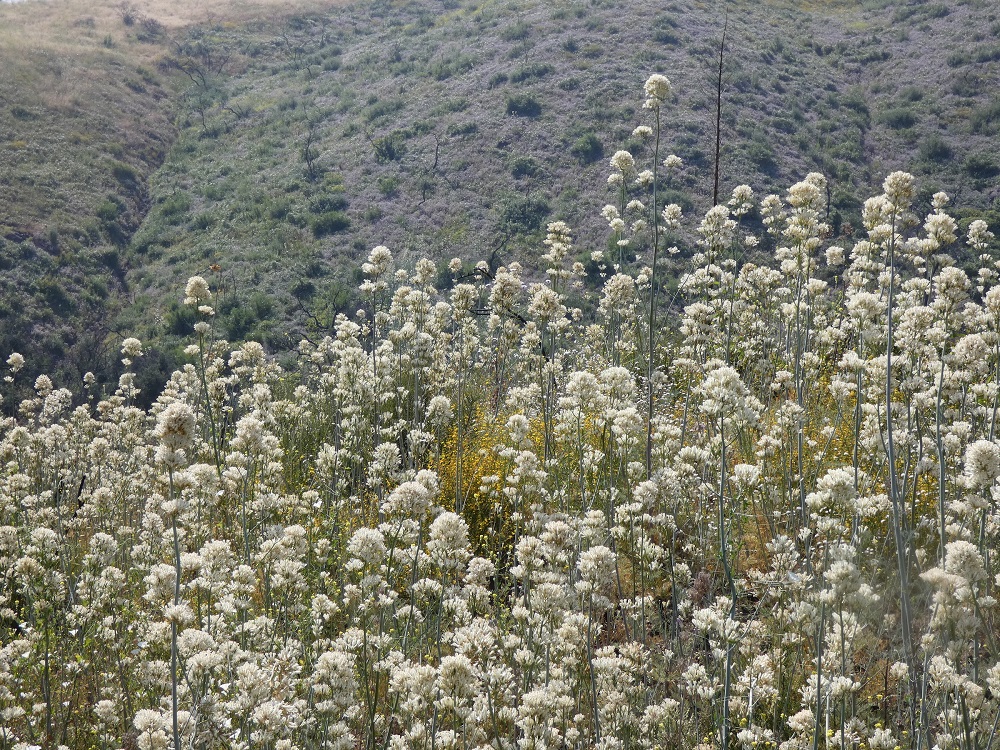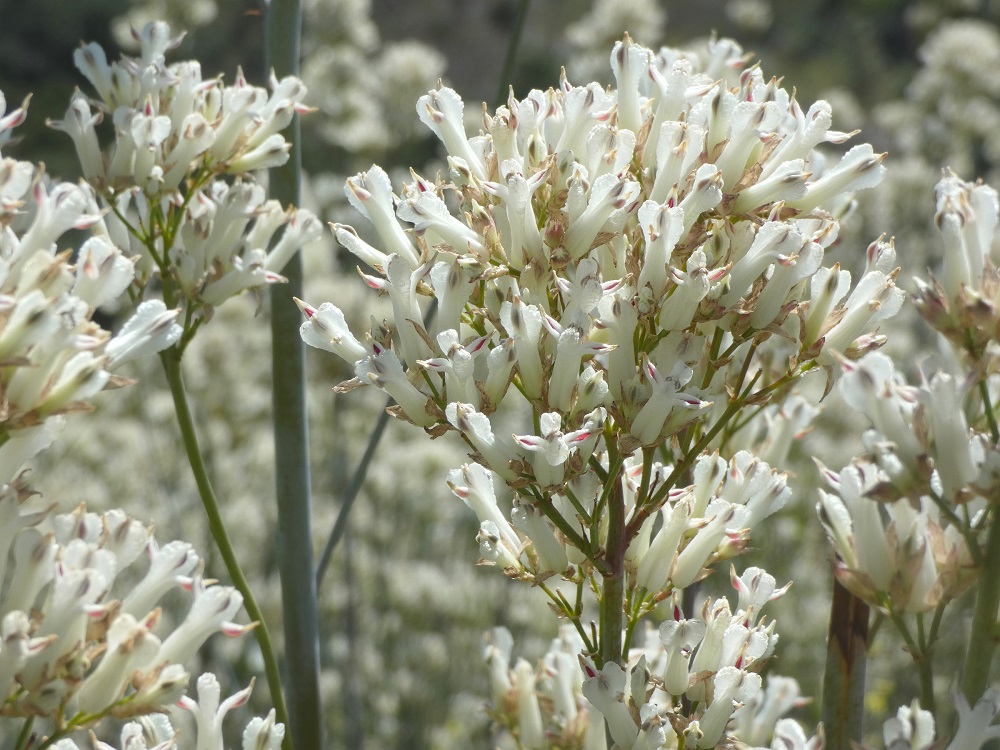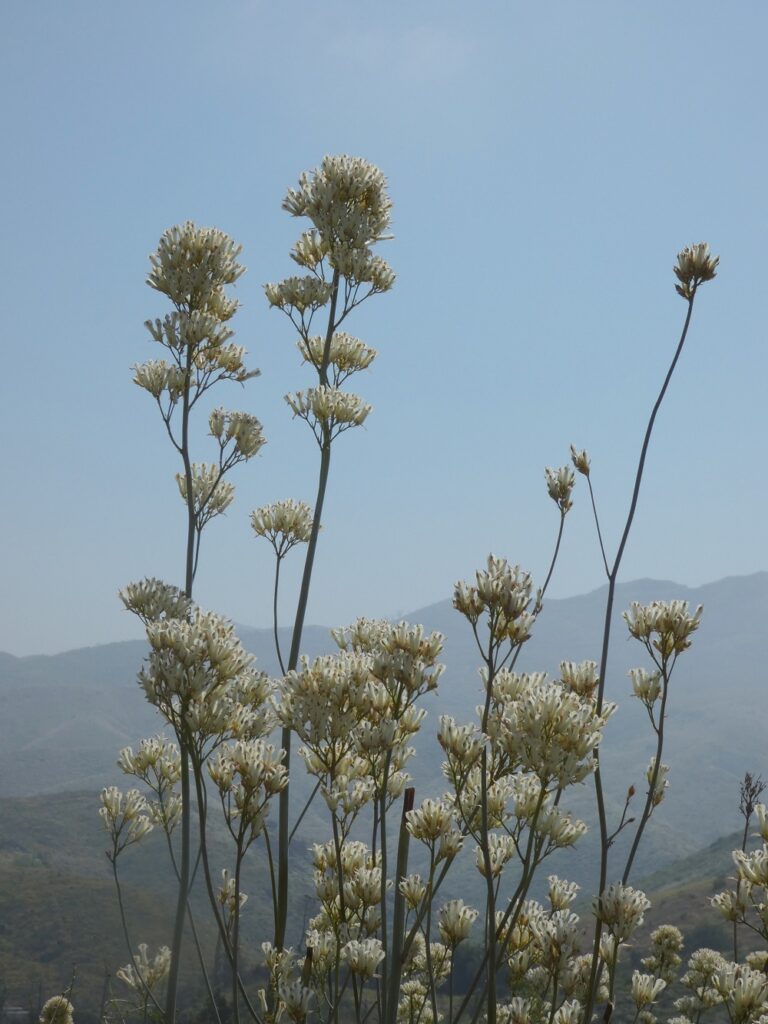
It has the elusive scent of a half-remembered perfume from childhood—vanilla, cinnamon, and musk, with a hint of dust and ashes—and it has covered wide swaths of the burned hills like a dusting of fragrant snow. Ehrendorferia ochroleuca is in full bloom in the Woolsey Fire burn zone, and it may be a once-in-a-lifetime sight. This wildflower is known as white bleeding hearts and eardrop—not because it looks like a medicine dropper but because each elaborate blossom is said to resemble a pearl earring. It is a true fire follower. Its seeds can remain viable in the soil for decades, only germinating in large numbers after a wildfire.

E. occhroleuca has the exotic look and scent of an orchid, but it is actually a member of the poppy family. It’s a biannual or short-lived perennial. Last spring, fern-like clumps of silver gray foliage appeared. This spring, forests of six-foot-tall flower stalks are blooming on vast expanses of hillside, filling the air with its distinctive fragrance.
Look for E. occhroleuca throughout the upper Kanan Road and Mullholland Highway corridor in the burn zone. For a close look, try Mishe Mokwe trail head in the Ventura County side of the Santa Monica Mountains off Yerba Buena, or the stretch of the Backbone Trail accessed by the Newton Canyon trailhead on Kanan Dume Road by Tunnel 1. But hurry, this once-in-a-lifetime bloom will quickly fade into memory.

Closer to home, look for several members of the clarkia family along Topanga Canyon Blvd., including luminous pink Clarkia cylindrica, and darker purple elegant clarkia. Other roadside wildflowers in bloom in the canyon include golden yarrow, purple sage, fuschia-like, brilliant red, heart-leaved penstemon blossoms, and sticky monkey flowers—exactly the color of orange sherbet. The sweet fragrance in the air here may be the inconspicuous green flowers of poison oak. The late rains have produced a bumper crop of this beautiful but toxic plant, so watch out while hiking or gardening.












